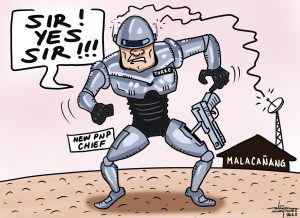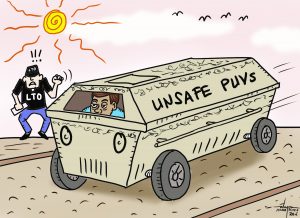Since the magnitude 5.9 earthquake in Kadingilan, Bukidnon at 9:22 p.m., there have been 65 aftershocks recorded by the Philvocs as of 3:46 p.m. yesterday. And we never get tired of reminding everybody that the aftershocks are as dangerous–if not more dangerous–as the main shock.
Aftershocks, by their very nature, are not as strong in intensity compared to the main quake. There are times when the aftershock seemed stronger when measured by the Richter scale. In that case, what was thought to be the main shock is called the fore shock, instead.
However, what makes aftershocks dangerous is that they can send already teetering structures collapsing. This is why we should not lower our guard after the earthquake.
For instance, Monday night’s quake in Bukidnon was felt at intensity 4 in Davao City. However, it caused part of the bypass road in Ponte Verde drive in Barangay Communal to collapse.
Since the 6.4 earthquake on Oct. 16 in Tulunan, North Cotabato, not a day goes by where Mindanao doesn’t experience tremors. The strong quake was followed by two more strong quakes that registered more than 6.0 in the Richter scale in Tulunan on Oct. 29. Finally, on Oct. 31, a 6.5 quake sent people who are already on edge panicking.
Aftershocks are unpredictable. What makes them more dangerous is people tend to relax after the main quake. They go about their normal routines. Employees go back to their offices and shopping malls resume operations.
But here is a little known fact about aftershocks, they last for weeks and months on end, especially when you are talking of very strong earthquakes. It is crucial, therefore, that schools, companies, and shopping centers adopt disaster risk management programs to instill a culture of safety on students, employees, and consumers.


